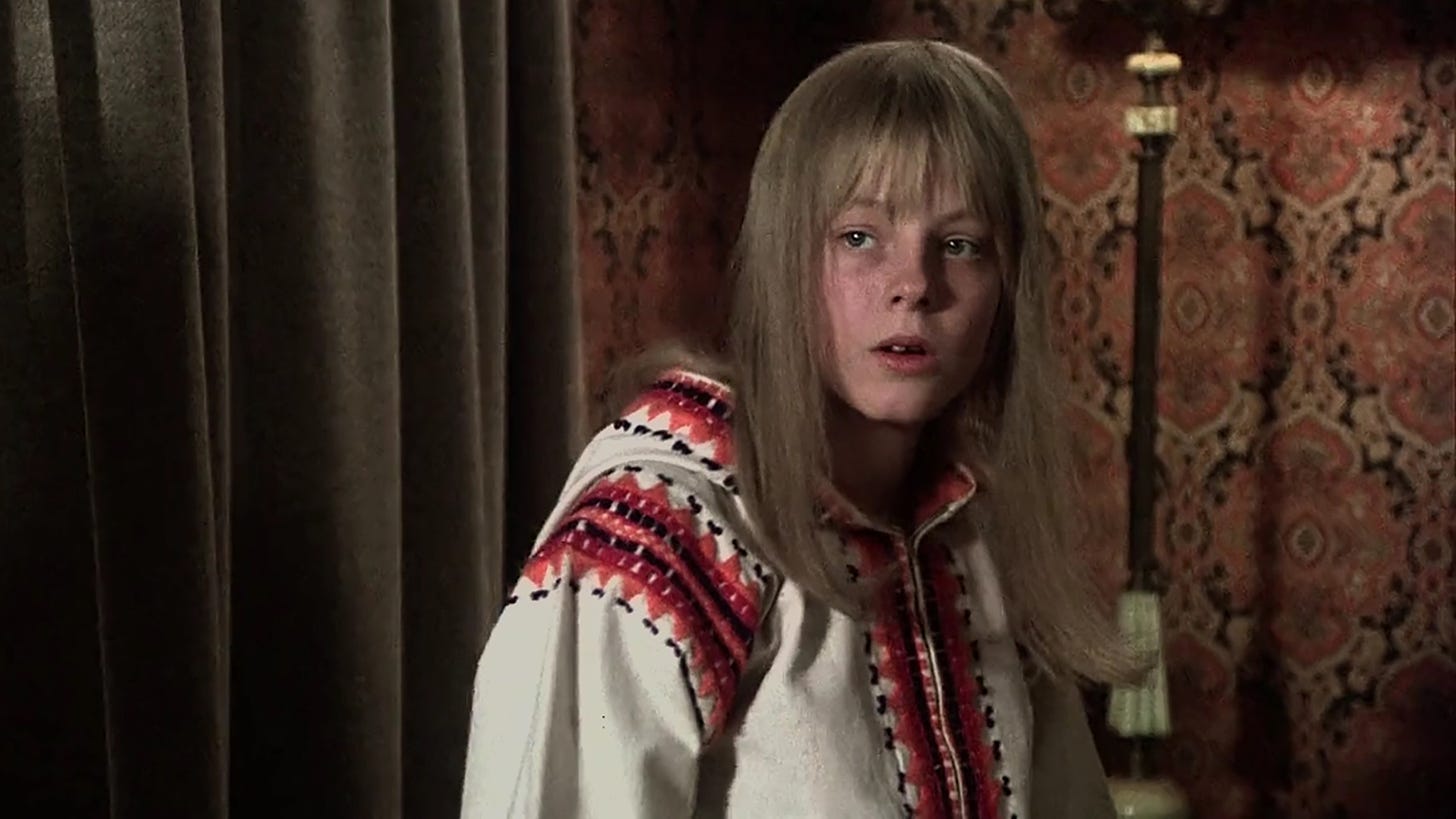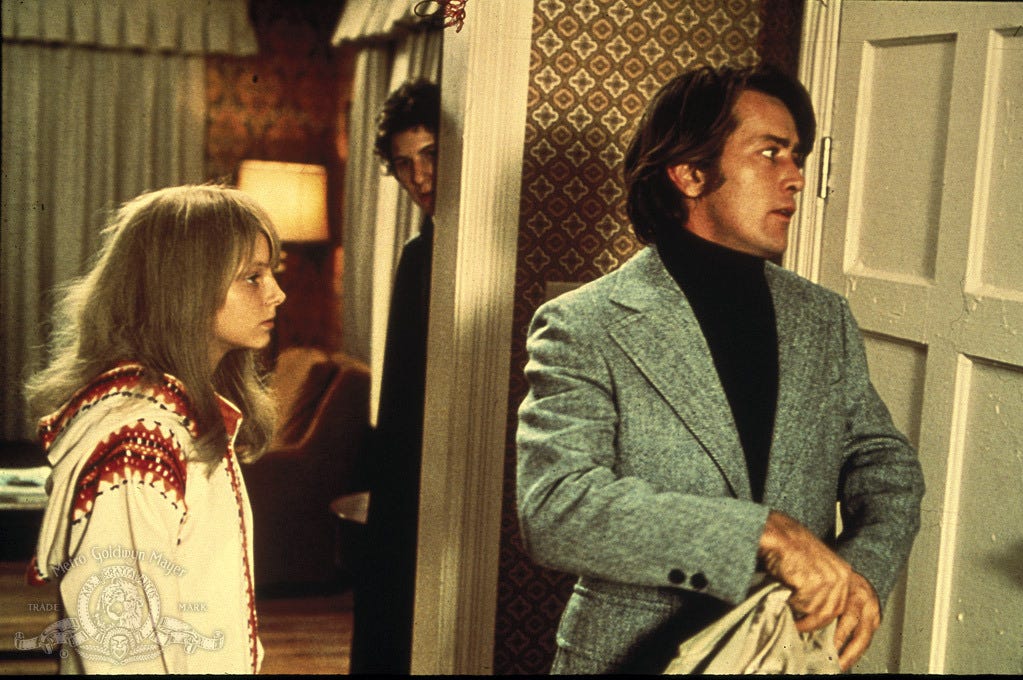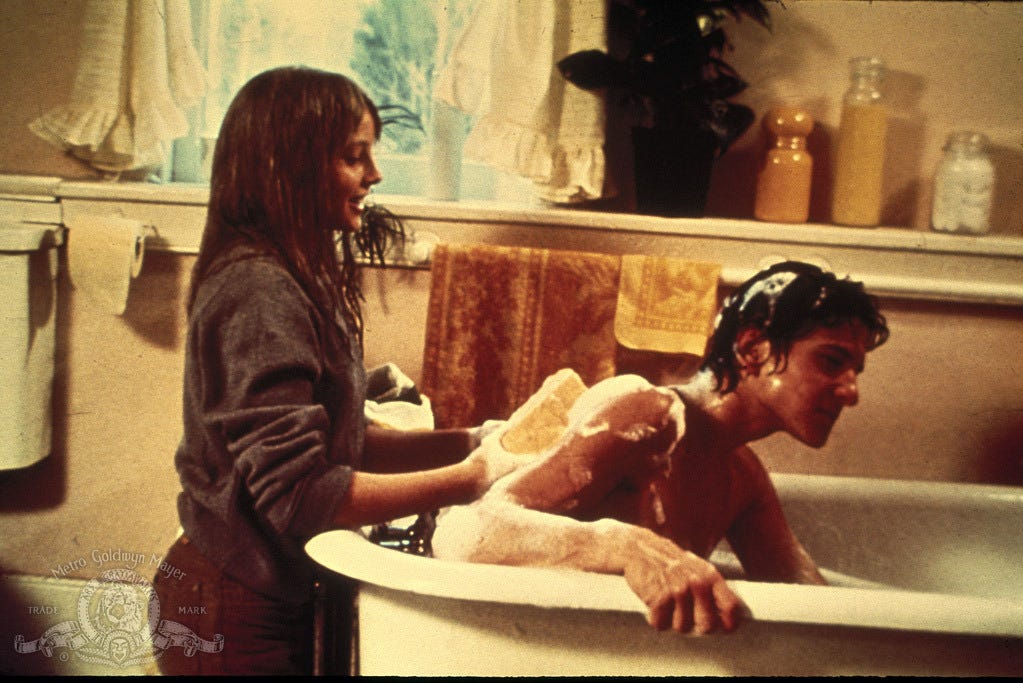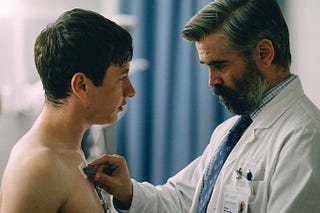
Home Alone: ‘The Little Girl Who Lives Down the Lane’
Jodie Foster’s other, less famous mid-’70s movie in which she plays a child grown up too fast asks if the kids are all right, and offers no comforting answers.
I mean no sleight against True Detective: Night Country, the recent HBO miniseries, when I say it peaks early. I enjoyed all six episodes, by and large, but no moment was quite as thrilling as when Jodie Foster, playing Alaskan police chief Liz Danvers, arrives at a crime scene. As Danvers begins asserting her authority while offering acerbic commentary, Foster quickly establishes who the character is and the status of her relationship with her subordinates, but there’s a wariness to her expression that suggests, beneath the bluster, she suspects she might be in over her head. Foster conveys all this within moments of her first appearance, laying the groundwork for all that follows. It’s assured, complicated work, and in a medium where Foster hasn’t really worked since the days of The Partridge Family and Kung Fu.
Foster has been a too-rare presence in any medium over the past decade, appearing in just three movies since Elysium in 2013, and she’s been missed. Some stars just know how to command the screen and Foster is one of them. She pretty much always has been, too. A look at her filmography reveals 1976 — the year of Taxi Driver, Bugsy Malone, and Freaky Friday — as her breakout year, though that’s a little deceptive, as Freaky Friday didn’t open widely until early the following year. It’s also the credited release year of two other movies, the drama Echoes of a Summer (one of a couple of movies I couldn’t track down for a semi-comprehensive survey of Foster’s career I did for The Dissolve) and The Little Girl Who Lives Down the Lane, a low-budget French and Canadian co-production that wouldn’t play American theaters, and then not that many, until 1977.
Taxi Driver is undoubtedly the film that announced Foster as a major talent, but The Little Girl Who Lives Down the Lane gives the intelligence and complexity that’s made her so compelling a more prolonged time in the spotlight. It’s also, in its own way, just as disturbing. For all the moral murkiness of Taxi Driver, it’s clear that Foster’s character has grown up too fast and become part of an adult world in which she should not be living. However coincidentally, The Little Girl Who Lives Down the Lane offers a dark counterpoint, casting Foster as a 13-year-old who’s too smart to be bossed around by the callous, stupid, and abusive adults around her, even if that means burying a few of them in her backyard.
Directed by Nicolas Gessner, a Hungarian journeyman whose lack of flash ends up benefitting the film, The Little Girl Who Lives Down the Lane adapts a 1973 novel by Laird Koenig, who also scripted. (By coincidence, both Gessner and Koenig died last year.) Foster plays Rynn Jacobs, who lives in a Victorian in some unnamed corner of what appears to be New England (though the film was shot on the east coast of Canada), having just moved there from England with her father, a poet of some renown. Or at least that’s what she tells everyone. No one seems ever to have seen her father, despite her insistence that he’s sleeping / in his study / away on business / too drunk whenever visitors ask.
Rynn gets a surprising number of visitors, too. The film opens on Halloween night as Rynn celebrates her thirteenth birthday, alone. She’s unfamiliar with the tradition of trick or treating, or at least claims to be when Frank Hallet (Martin Sheen), the son of her landlady Cora, shows up ahead of his two sons. Without even huffing and puffing, he invites himself in, an obvious predator who immediately puts his prey on the defensive when he makes a joke about “dirty old men who try to give pretty little girls some candy.” He stands a little too close and lets his eyes linger too long. And he has questions: Are those her father’s French cigarettes he smells? And where is her father? And what about her mother? Does she have a boyfriend?
The thing about Frank, Rynn quickly discovers, is that everyone knows what he is but his position makes him untouchable. Played by Sheen, he’s a kind of privileged, distant relation of his killer Kit in Badlands: not nearly as seductive, but just as predatory and with a support system to paper over his offenses. (For a truly creepy double feature, pair this film with another Reveal favorite, Smooth Talk.) Cora effectively runs the town, even if it’s gone downhill by her standards. There are simply too many Italians now, and Rynn’s study of Hebrew is just one more reason to look down on her. Arriving unexpectedly, Cora immediately begins moving the furniture back to its proper place. She even tries to have a look in the cellar, but this turns out to be a bad idea.
Though the film rarely strays from Rynn’s house, The Little Girl Who Lives Down the Lane fills in much of the history of her new town with a few telling details. Both the friendly policeman Officer Miglioriti (winningly played by Mort Shuman, co-writer, with Doc Pomus, of songs you’ve heard a million times) and Mario (Scott Jacoby), a teenaged magician who becomes smitten with Rynn, come from the Italian population Cora disdains. Frank, it turns out, has been caught sexually menacing girls in the past, but a quickie marriage arranged by his mother helped cover it up. It’s the sort of place where there are no secrets, even if people only pass them along in whispers.
That lack of privacy makes it hard to be Rynn. That she lives alone, her father having made arrangements for her independence before his death, is just the beginning of her secrets. But, as extraordinary as Rynn’s circumstances might be, The Little Girl Who Lives Down the Lane is just as much about how hard it is for any girl to be thirteen. Rynn’s on guard at all times, but the film keeps offering examples of how she’d have to be that way even if she weren’t a parentless girl in a strange town. Officer Miglioriti aside, the adults she meets treat her as if she has no will of her own. Frank’s the most dangerous creep she’s ever met, but it’s clear she’s had to fend off the inappropriate attentions of men since they started looking at her differently.
Rynn’s adolescence, like every adolescence, takes place in a gray area, even if its grayness is more intense than most others. When Rynn takes Mario to bed (Foster’s older sister served as her body double for some shots of nudity that were sometimes cut from the film), it’s presented with tenderness and matter-of-fact frankness but still doesn’t feel right. These are kids playing at adulthood. They’re doing a better job at it than the actual adults around them, but they’re still just kids.
Similarly, the film doesn’t shy away from depicting the awfulness of some of the actions she takes, but it also never lets viewers sympathies drift anywhere else. The ad campaign marketed The Little Girl Who Lives Down the Lane as a horror movie, which it sort of is. It arrived in theaters a year after The Omen and four years after The Exorcist, but the creepiest thing about it is how un-creepy Rynn is. Murderer or not, she’s a bright, likable kid who just wants to be left alone and doesn’t feel the need to go to school because she learns more on her own anyway.
In some respects, Foster must have understood the part well. In a 1976 profile, gossip columnist Liz Smith calls her “[s]marter than those who might exploit her” with “an ironclad grip on her elusive butterfly career” and seems amused when Foster rattles off references to The Last Tango in Paris (which Foster slept through), Lina Wertmuller, and Terry Southern’s Blue Movie. “If she is an example, maybe we should let kids see and read everything,” Smith concludes.
But there’s another side of living in the space between childhood and adulthood under a limelight. “Jodie Foster, 13 going on 35, is uncanny in ways that can make one uncomfortable,” George Anderson wrote in his review in the Pittsburgh Post-Gazette. “It isn’t just that worldly blasé quality or that throaty grown-up voice. It’s the way she seems to legitimize the Lolita syndrome.” Sometimes the response to a film proves its point.
“The Little Girl Who Lives Down the Lane has artistry and taste,” Joe Baltake wrote in his Philadelphia Daily News review. “It’s an evil little film willed with perverse humor and the tang of a bittersweet raspberry tart.” That’s an apt if incomplete summary. Its “evilness” comes from its unrepentant darkness and willingness to see its suggestion that Rynn’s all right, it’s the rest of the world that’s screwed up all the way through to its unforgettable final scene. Providing the full context would be a spoiler, but the combination of weariness, disappointment, and resolve in Foster’s eyes that Gessner lets play out against the backdrop of a crackling fire as the credits roll tells a story of its own. Rynn’s seen what the world has to offer. Sadly, it’s what she expected.
The Little Girl Who Lives Down the Lane is currently streaming on Prime Video, The Roku Channel, Tubi, and Pluto TV. It is also available on Blu-ray and DVD.


















I watched this a few years ago on Shudder (truly one of the great streaming services), and was shocked even learning about it. How is it that a movie with Jodie Foster and Martin Sheen just... disappeared? I would have expected to have seen it on the shelf at the video store at least.
Regardless, it's a really great, creepy, unpredictable movie, and I was really taken with how it let itself shift and change direction without a misstep. And through it all, they kept it intensely focused on this child who is also kind of an adult and how there are just so many people who won't mind their business. And through it all, I don't remember her backing down or flinching, so not only is this CHILD talking back to this adult who runs the town, but it's also a GIRL doing it. It just all felt so satisfying while simultaneously making me feel scared for her.
Also, having Mario be the weaker of the two and with a (polio vaccine inflicted?) limp, was an interesting choice, as it prevents him from ever feeling like she's safe now that a MAN is here.
This movie creeped me out when I first saw it years ago.
Also, make it a triple feature and add in Never Take Sweets from a Stranger, which really nails the part shown here about how an entire town can cover up a creeps crimes.